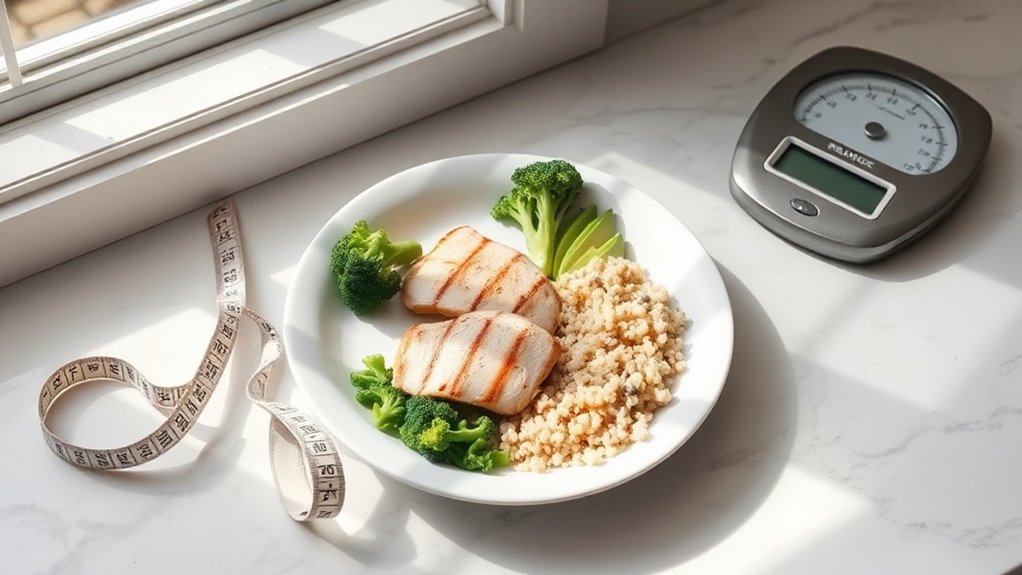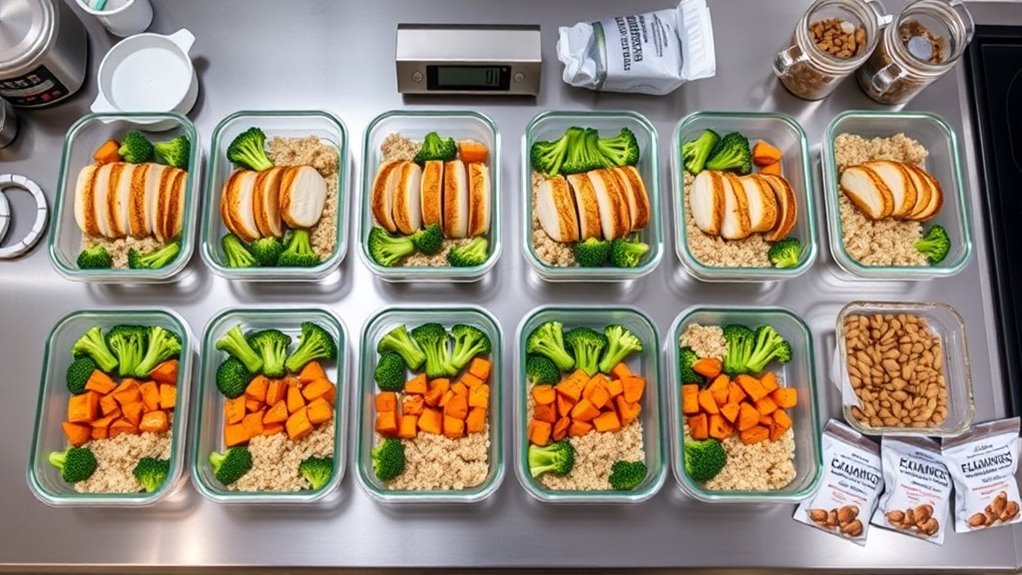Science Says THIS Is the Best Time to Eat for Maximum Fat Burn!
If you’re looking to maximize fat burn, meal timing might be your key to success. It’s not just about what you eat, but when you eat that can significantly impact your metabolism and energy use. By aligning your meals with specific windows throughout the day, you could enhance your body’s natural rhythms. But what are these optimal times, and how can you effectively incorporate them into your daily routine? Let’s explore this further.
Understanding Metabolism and Fat Burn
When you understand metabolism, you can unlock the secrets to effective fat burn. It’s not just about what you eat but also when you eat. By aligning your meal timing for weight loss with your body’s natural rhythms, you create an environment that supports fat loss.
Your metabolism functions best when it receives regular fuel, which means eating at consistent times can help it work efficiently. Timing-based eating can be a game changer for weight management, allowing you to maximize calorie burning throughout the day.
Think of your body as a finely tuned machine; it thrives on routine. When you space out your meals appropriately, your body can optimize energy use and manage hunger better. You’ll feel more energized and less deprived, making it easier to stick to your goals.
Create a sense of belonging in your journey by sharing your meal timing successes with others, and inspire each other to stay committed. Together, you can achieve the fat-burning results you desire!
The Role of Meal Timing in Weight Loss
Meal timing plays a crucial role in your weight loss journey because it influences how your body processes food and burns fat. When you eat at consistent times, you help regulate your metabolism, making it easier for your body to manage energy levels and cravings.
It’s not just about what you eat; when you eat can make a big difference.
If you’re part of a community that values healthy living, you know how supportive it can be to share meal times with others. Eating together fosters connections and encourages accountability. By aligning your meal timing with others, you might find it easier to stick to your goals.
Listening to your body’s hunger cues is also essential. Eating when you’re genuinely hungry, rather than out of boredom or stress, can lead to better choices. Additionally, recognizing timing issues can lead to smarter dietary choices that support your weight loss efforts.
Optimal Eating Windows for Maximum Fat Burn
To achieve maximum fat burn, it’s essential to identify optimal eating windows that align with your body’s natural rhythms. By syncing your meals with your daily energy peaks, you can enhance fat loss while feeling satisfied and energized.
| Time of Day | Optimal Eating Window |
|---|---|
| Morning | 7 AM – 10 AM |
| Midday | 12 PM – 2 PM |
| Afternoon | 4 PM – 6 PM |
| Evening | 6 PM – 8 PM |
| Night | 8 PM – 9 PM |
These windows allow your body to utilize energy efficiently. Eating during these times can help you feel a sense of belonging to a community focused on health and wellness. You’re not just eating; you’re participating in a lifestyle that prioritizes your goals. Pay attention to your body’s signals, and enjoy the journey to maximum fat burn together with others seeking the same. Additionally, ensuring quality sleep is crucial for effective weight management and enhancing your overall fat-burning potential.
Scientific Studies Supporting Meal Timing
Numerous scientific studies underscore the importance of meal timing in enhancing fat burn and overall metabolic health. Research shows that eating earlier in the day can lead to more effective weight management. For instance, a study published in the journal Obesity found that participants who consumed most of their calories in the morning experienced greater fat loss compared to those who ate later.
Additionally, time-restricted eating has gained traction, with studies suggesting that limiting your eating window can improve insulin sensitivity and promote fat loss. Another investigation indicated that individuals who practiced intermittent fasting showed a significant reduction in body fat. These findings highlight how meal timing isn’t just about what you eat; it’s also about when you eat. By aligning your meals with your body’s natural rhythms, you can optimize fat burn and feel more energized, fostering a sense of community and support among those on a similar journey. Furthermore, adopting intermittent fasting methods can enhance your overall results by promoting mindful eating and establishing a sustainable eating rhythm.
Practical Tips for Implementing Meal Timing
Here are some practical tips to get you started:
-
Plan Ahead: Set aside time each week to prepare meals, ensuring you always have healthy options on hand.
-
Listen to Your Body: Pay attention to hunger cues and eat when you’re truly hungry, rather than out of habit.
-
Use a Timer: Consider setting alarms for meal times to keep you on track, especially during busy days.
-
Stay Hydrated: Drink water throughout the day; sometimes thirst can be mistaken for hunger. Additionally, staying hydrated can help curb hunger and reduce cravings, making it easier to stick to your meal timing plan.
Common Myths About Eating and Fat Loss
Many people fall victim to common myths about eating and fat loss, believing that certain foods or timing strategies alone can guarantee results.
One popular myth is that eating after a specific time will automatically lead to weight gain. The truth is, it’s the total daily calorie intake and the quality of those calories that matter most, not the clock. Additionally, mindful choices made during late-night eating can prevent unwanted weight gain.
Another misconception is that cutting out carbs entirely is the key to fat loss. In reality, healthy carbs can fuel your workouts and keep you energized.
Additionally, some think that skipping meals speeds up fat loss, but this often leads to overeating later. Instead, focus on balanced meals and consistent timing that fits your lifestyle.
By debunking these myths, you can build a sustainable plan that helps you feel connected and supported in your journey toward fat loss.





